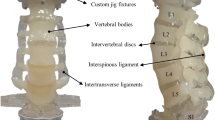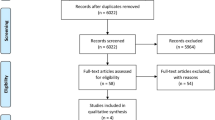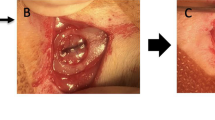Abstract
Purpose
In the present report it is described the design, the manufacturing and the successful surgical implant of one of the first 3D custom titanium vertebra realized with Additive Manufacturing technique and its use for the spinal reconstruction after en-bloc resection for primary osteogenic sarcoma.
Methods
Clinical case presentation and the design of the 3D custom titanium vertebra was reported. It was also described the complex procedures adopted to evaluate the retrieved device from the histological point of view, as a tumor relapse hit the patient, one year after the reconstruction procedure.
Results
The histological evaluation confirmed that the resection technique exerts an important role in promoting bone formation: vertebral body osteotomies favored the reconstruction procedure and maximized the contact area between host bone/vertebral prosthesis thus favoring the bone tissue penetration and device colonization.
Conclusion
The sharing of these results is very important as they represent the starting point for improving the knowledge starting from the evidence obtained in a challenging clinical condition and with post-operative treatments that could be never reproduced in preclinical model.





Similar content being viewed by others
References
Bridwell KH, Lenke LG, McEnery KW, Baldus C, Blanke K (1995) Anterior fresh frozen structural allografts in the thoracic and lumbar spine. Do they work if combined with posterior fusion and instrumentation in adult patients with kyphosis or anterior column defects? Spine 20(12):1410–8
Antoni M, Charles YP, Walter A, Schuller S, Steib JP (2015) Fusion rates of different anterior grafts in thoracolumbar fractures. J Spinal Disord Tech 28(9):E528–E533
Boriani S, Gasbarrini A, Bandiera S, Ghermandi R, Lador R (2017) En bloc resections in the spine: The experience of 220 patients during 25 years. World Neurosurg 98:217–229
Glennie RA, Rampersaud YR, Boriani S, Reynolds JJ, Williams R, Gokaslan ZL, Schmidt MH, Varga PP, Fisher CG (2016) A systematic review with consensus expert opinion of best reconstructive techniques after osseous en bloc spinal column tumor resection. Spine 41(20):S205–S211
Kim D, Lim JY, Shim KW, Han JW, Yi S, Yoon DH, Kim KN, Ha Y, Ji GY, Shin DA (2017) Sacral reconstruction with a 3D-printed implant after hemisacrectomy in a patient with sacral osteosarcoma: 1-year follow-up result. Yonsei Med J 58(2):453–457
Choy WJ, Mobbs RJ, Wilcox B, Phan S, Phan K, Sutterlin CE 3rd (2017) Reconstruction of thoracic spine using a personalized 3D-Printed vertebral body in adolescent with t9 primary bone tumor. World Neurosurg 105:1032.e13-1032.e17
Mobbs RJ, Coughlan M, Thompson R, Sutterlin CE 3rd, Phan K (2017) The utility of 3D printing for surgical planning and patient-specific implant design for complex spinal pathologies: case report. J Neurosurg Spine 26(4):513–518
Wei R, Guo W, Ji T, Zhang Y, Liang H (2017) One-step reconstruction with a 3D-printed, custom-made prosthesis after total en bloc sacrectomy: a technical note. Eur Spine J 26(7):1902–1909
Girolami M, Boriani S, Bandiera S, Barbanti-Bródano G, Ghermandi R, Terzi S, Tedesco G, Evangelisti G, Pipola V, Gasbarrini A (2018) Biomimetic 3D-printed custom-made prosthesis for anterior column reconstruction in the thoracolumbar spine: a tailored option following en bloc resection for spinal tumors: Preliminary results on a case-series of 13 patients. Eur Spine J 27(12):3073–3083
Cuadrado A, Yánez A, Martel O, Deviaene S, Monopoli D (2017) Influence of load orientation and of types of loads on the mechanical properties of porous Ti6Al4V biomaterials. Mater Des 135:309–318
Yánez A, Cuadrado A, Martel O, Afonso H, Monopoli D (2018) Gyroid porous titanium structures: a versatile solution to be used as scaffolds in bone defect reconstruction. Mater Des 140:21–29
Izquierdo I, Santos L, Becerra J, Feito JM, Fernández D, Serrano MC, Díaz I, Fernández-Tomé B, Enciso S, Sánchez FM, Monopoli D, Afonso H, Portolés MT, Arcos D, Vallet M (2019) Synergistic effect of Si-hydroxyapatite coating and VEGF adsorption on Ti6Al4V-ELI scaffolds for bone regeneration in an osteoporotic bone environment. Acta Biomater 83:456–466
Enneking WF, Spanier SS, Goodman MA (1980) A system for the surgical staging of musculoskeletal sarcoma. Clin Orthop Relat Res 153:106–120
Boriani S, Weinstein JN, Biagini R (1997) Primary bone tumors of the spine terminology and surgical staging. Spine 22(9):1036–44
Yánez A, Fiorucci MP, Cuadrado A, Martel O, Monopoli D (2020) Surface roughness effects on the fatigue behaviour of gyroid cellular structures obtained by additive manufacturing. Int Jour Fatigue 138:105702
Cambre KN, Francovich J, Julmi S, Safranski D, Guldberg RE, Maier H, Gall K (2019) Fatigue behavior of As-built selective laser melted titanium scaffolds with sheet-based gyroid microarchitecture for bone tissue engineering. Acta Biomater 94:610–626
Yang L, Mertens R, Ferrucci M, Yan C, Shi Y, Yang S (2019) Continuous graded gyroid cellular structures fabricated by selective laser melting: Design, manufacturing and mechanical properties. Mater Des 162:394–404
Yánez A, Herrera A, Martel O, Monopoli D, Afonso H (2016) Compressive behaviour of gyroid lattice structures for human cancellous bone implant applications. Mater Sci Eng C Mater Biol Appl 68:445–448
Maglio M, Salamanna F, Brogini S, Borsari V, Pagani S, NicoliAldini N, Giavaresi G, Fini M (2020) Histological Histomorphometrical, and Biomechanical Studies of Bone-Implanted Medical Devices: Hard Resin Embedding. Biomed Res Int. https://doi.org/10.1155/2020/1804630
Cizek GR, Boyd LM (2000) Imaging pitfalls of interbody spinal implants. Spine 25(20):2633–6
Ngo TD, Kashani A, Imbalzano G, Nguyen KTQ, Hui D (2018) Additive manufacturing (3D printing): A review of materials, methods, applications and challenges. Compos B Eng 143:172–196
Burnard JL, Parr WCH, Choy WJ, Walsh WR, Mobbs RJ (2020) 3D-printed spine surgery implants: a systematic review of the efficacy and clinical safety profile of patient-specific and off-the-shelf devices. Eur Spine J 29(7):1786
Acknowledgements
The Authors acknowledge the invaluable contribution of Cristiana Griffoni and Carlo Piovani for patient storage and data collection. This study contributed to the development of the Project by National Funding Organisations (Ministero della Salute – IMH) under the frame of EuroNanoMed III Project “Next generation antibacterial nanostructured osseointegrated customized vertebral replacement – NANOVERTEBRA” Joint Transnational call for proposals (JTC 2018).
Author information
Authors and Affiliations
Corresponding author
Ethics declarations
Conflicts of interest
Donato Monopoli-Forleo is employed as a researcher for Canary Islands Institute of Technology.
All others authors declare no conflicts of interest.
Additional information
Publisher's Note
Springer Nature remains neutral with regard to jurisdictional claims in published maps and institutional affiliations.
Rights and permissions
About this article
Cite this article
Girolami, M., Sartori, M., Monopoli-Forleo, D. et al. Histological examination of a retrieved custom-made 3D-printed titanium vertebra. Eur Spine J 30, 2775–2781 (2021). https://doi.org/10.1007/s00586-021-06926-w
Received:
Revised:
Accepted:
Published:
Issue Date:
DOI: https://doi.org/10.1007/s00586-021-06926-w




